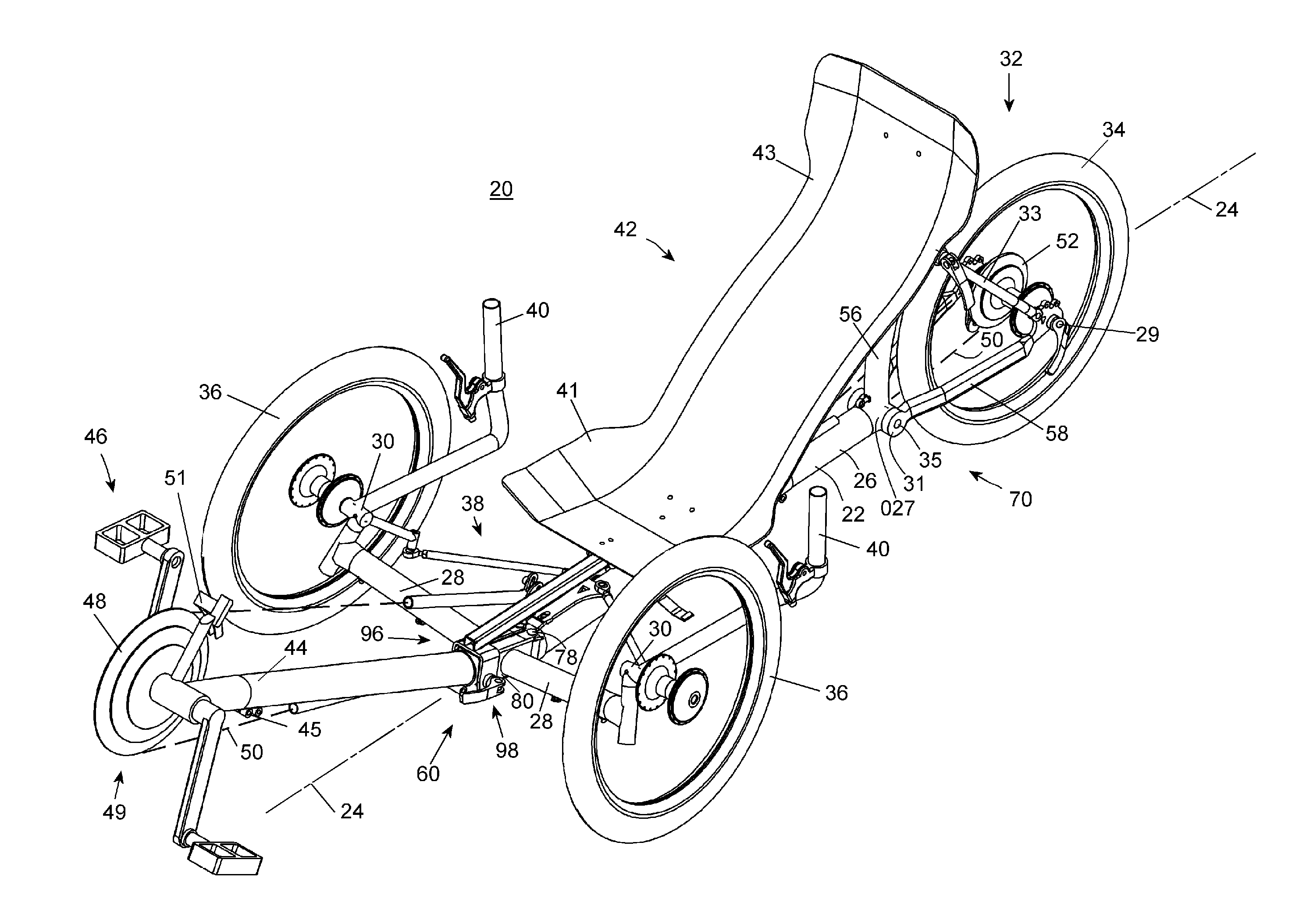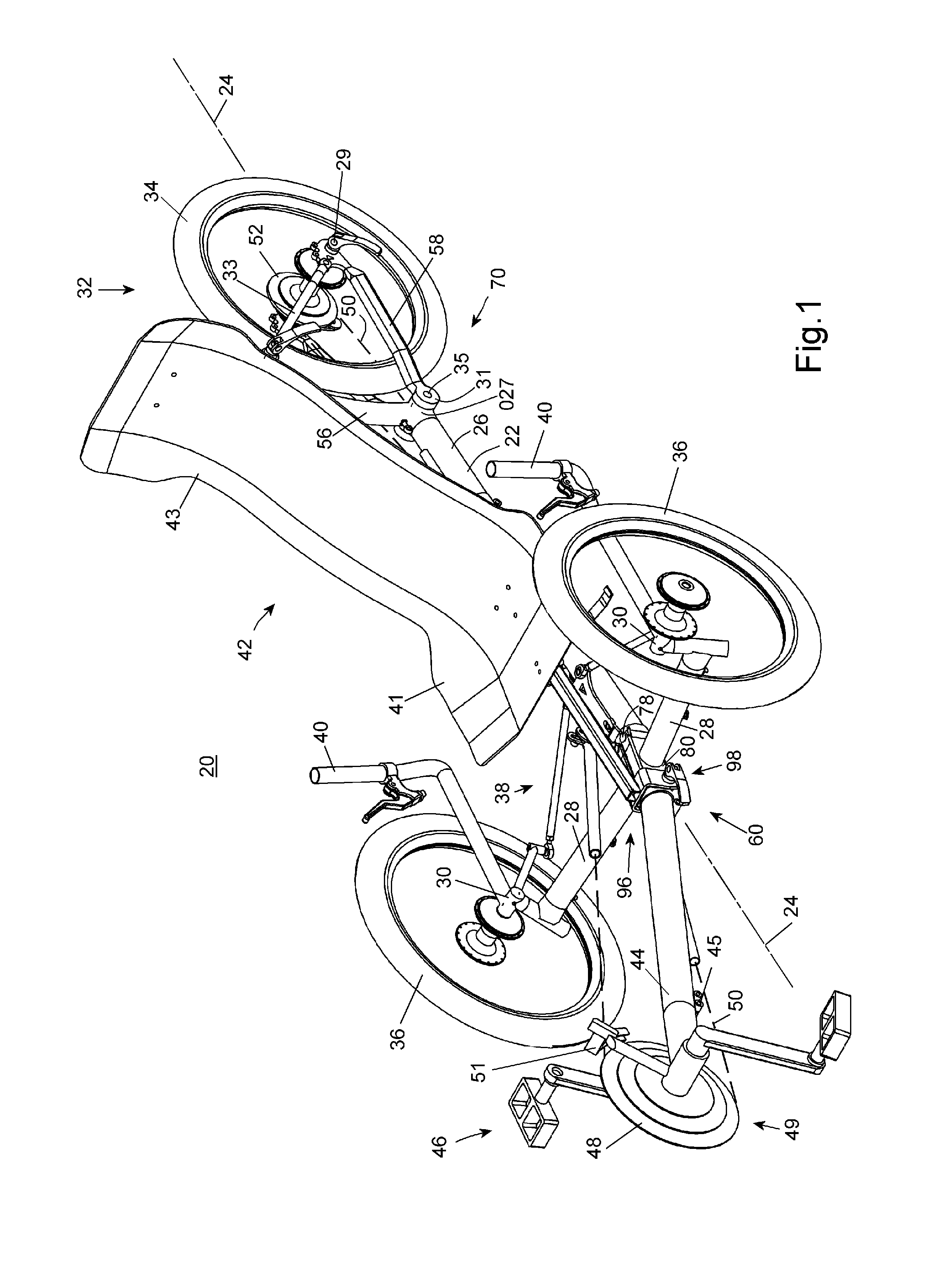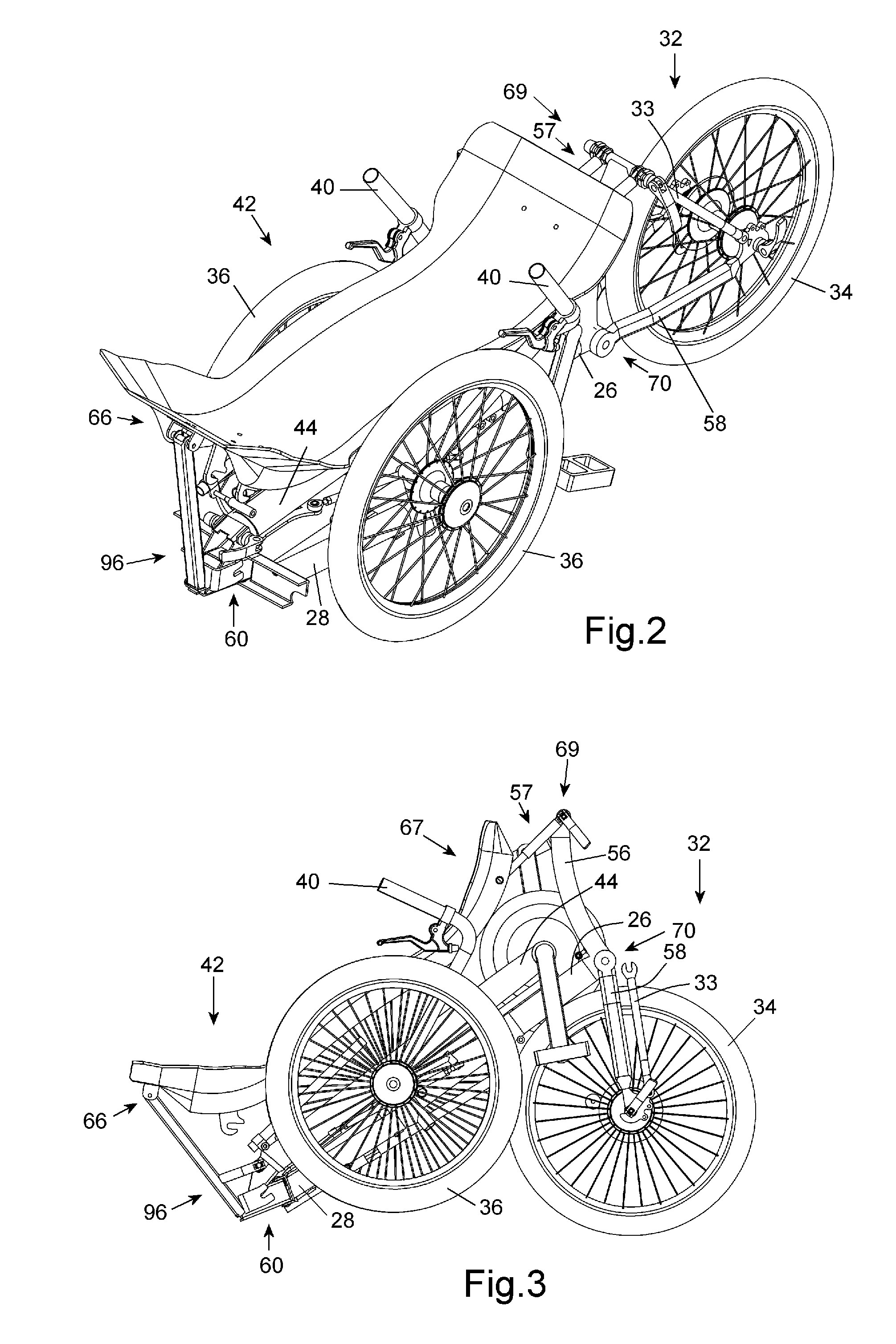Collapsible Recumbent Tricycle
a recumbent tricycle and seat technology, applied in the field of small land vehicles, can solve the problems of losing aerodynamic advantage, unable to fit through gates and other narrow places, and collapse to a small size, and achieve the effect of easy collapse and quick and easy collaps
- Summary
- Abstract
- Description
- Claims
- Application Information
AI Technical Summary
Benefits of technology
Problems solved by technology
Method used
Image
Examples
embodiment 60
Main arm assembly 72A differs from the first compound hinge embodiment 60 in that the assembly includes a sleeve plate 101A that further includes a generally vertically oriented channel 110A that supports at each distal end of each flange a sleeve 114A, and supports at its upper end sleeve 115A, and at the lower end a tongue 74A. Sleeve plate 101A can be variously fabricated by joining separate parts or by stamping and rolling from a flat plate or by casting or molding or forging methods as is common practice in fabricating hinges. Tubular member 100A is attached to the rear of sleeve plate 101A with holes 117A congruent with the outer surface of sleeves 114A. Tubular member 100A has a square hollow section shape at its front transitioning to a circular shape at the rear, the axis of the rear portion optionally being inclined at an angle to the compound hinge central axis 61A and form a socket or lug portion 118A for attaching to spine 26. Tubular member 100A also optionally include...
embodiment 395
Another embodiment of radius arm assembly, 395A is shown in FIG. 11A. This embodiment differs in that it includes a plate 412A that has a lower side shaped to sit on spine 26. Also extending upward from the upper side of the plate is axle 405A with a stepped end 407A. Radius arm 394A includes hole 402A by which it is pivotably connected to stepped end 407A of the axle forming radius arm pivot 404A. Pivot 404A can include bushes or bearings (not shown) and a fastener (not shown) holds radius arm 394A on stepped end 407A of the axle. Plate 412A also includes an elongate slot 414A. One or two fasteners (not shown) are fixed through that slot into holes (not shown) in the top surface of spine 26 to fasten plate 412A to the spine and to provide a slideable connection for the plate. The fasteners are tightened to fix the slideable connection in the required position. Similar to embodiment 395, tie rods 392 can be adjusted to length for the desired toe-in and pivot 404A can be positioned u...
first embodiment
Yet another embodiment of the radius arm assembly, 395B can include radius arm 394B, which is shown in FIG. 11B. The radius arm assembly can be attached using hole 402B to the axle 405 (FIG. 11) of the The radius arm differs in that a slot 397B divides the arm from the arc end into two narrower arms 394L and 394R each having at the arc end a hole 400B. Arms 394L and 394R have threaded holes (not shown) through the side accepting fasteners 398B. When the fasteners are tightened the ends of the fasteners can press together pushing apart the arc ends of arms 394L and 394R thereby expanding the width of slot 397B and increasing the spacing between holes 400B.
Also, a fastener 399B is fitted through another hole (not shown) through the side of arm 394L and into a threaded hole (not shown) through the side of arm 394R. When the fastener is tightened it pulls together arms 394L and 394R reducing the width of slot 397B and decreasing the spacing between holes 400B. As can be appreciated fas...
PUM
 Login to View More
Login to View More Abstract
Description
Claims
Application Information
 Login to View More
Login to View More - R&D
- Intellectual Property
- Life Sciences
- Materials
- Tech Scout
- Unparalleled Data Quality
- Higher Quality Content
- 60% Fewer Hallucinations
Browse by: Latest US Patents, China's latest patents, Technical Efficacy Thesaurus, Application Domain, Technology Topic, Popular Technical Reports.
© 2025 PatSnap. All rights reserved.Legal|Privacy policy|Modern Slavery Act Transparency Statement|Sitemap|About US| Contact US: help@patsnap.com



